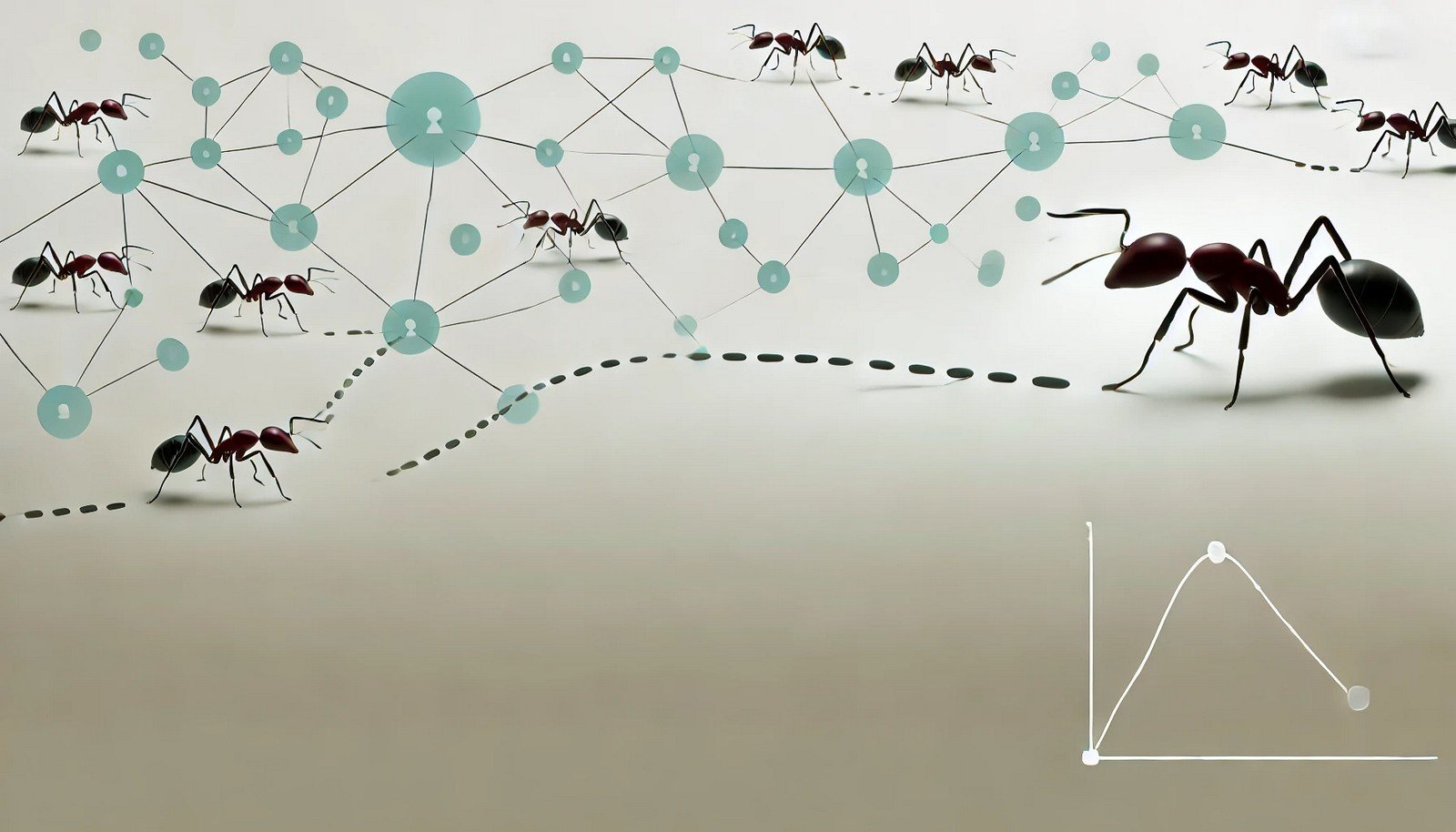Ant Colony Optimization (ACO)

Quick Navigation:
- Ant Colony Optimization Definition
- Ant Colony Optimization Explained Easy
- Ant Colony Optimization Origin
- Ant Colony Optimization Etymology
- Ant Colony Optimization Usage Trends
- Ant Colony Optimization Usage
- Ant Colony Optimization Examples in Context
- Ant Colony Optimization FAQ
- Ant Colony Optimization Related Words
Ant Colony Optimization Definition
Ant Colony Optimization (ACO) is a nature-inspired algorithm used in computer science and artificial intelligence to solve complex combinatorial optimization problems. Inspired by the foraging behavior of real ants, ACO models how ants deposit pheromones on paths to indicate the shortest route to food sources. This algorithm iteratively builds solutions by simulating this pheromone trail mechanism, making it effective for tasks like network routing, scheduling, and the traveling salesman problem.
Ant Colony Optimization Explained Easy
Imagine you’re looking for the fastest way to get to your friend's house, but you don’t have a map. You try different routes and leave markers on the paths that seem shorter. After a while, you start following the route with the most markers because it’s likely the quickest. Ant Colony Optimization works similarly: ants explore various paths, leaving “markers” (pheromones) on the shortest routes, which other ants then follow.
Ant Colony Optimization Origin
ACO was first introduced by Marco Dorigo in the early 1990s as part of his Ph.D. thesis, aiming to solve the traveling salesman problem. Since then, ACO has evolved and been applied in many optimization tasks, particularly in fields requiring efficient routing or scheduling solutions.
Ant Colony Optimization Etymology
The name "Ant Colony Optimization" comes from its basis in the behavior of ant colonies, where ants collectively find optimized solutions to foraging problems by leaving pheromone trails.
Ant Colony Optimization Usage Trends
Ant Colony Optimization has grown in popularity with advances in AI and machine learning. Its application spans industries like telecommunications, where it’s used for network routing, and manufacturing for scheduling tasks. Recently, ACO has also been applied in robotic path planning and bioinformatics.
Ant Colony Optimization Usage
- Formal/Technical Tagging:
- Swarm Intelligence
- Machine Learning
- Optimization Algorithms - Typical Collocations:
- "ant colony optimization algorithm"
- "pheromone trail mechanism"
- "ACO in network routing"
- "optimization using ant colony model"
Ant Colony Optimization Examples in Context
- ACO is used in telecommunications to optimize the routing of data across complex networks.
- In logistics, ACO algorithms help in designing efficient delivery routes.
- Researchers apply ACO in bioinformatics to find optimal gene sequences.
Ant Colony Optimization FAQ
- What is Ant Colony Optimization?
Ant Colony Optimization (ACO) is an algorithm that mimics ant behavior to solve optimization problems by simulating pheromone trails. - How does ACO work?
ACO works by having simulated “ants” explore paths and leave pheromones, creating a probabilistic guide to the optimal route. - Where is ACO used?
ACO is used in network routing, scheduling, logistics, and even robotic path planning. - Why is ACO effective?
ACO’s iterative approach, based on pheromone trails, effectively narrows down the best solution by favoring shorter paths. - Is ACO part of AI?
Yes, ACO is an AI-based algorithm, classified under swarm intelligence. - How does ACO differ from other optimization algorithms?
Unlike traditional algorithms, ACO uses a decentralized approach inspired by nature, where simple agents (ants) collectively find optimal solutions. - Can ACO be combined with other algorithms?
Yes, ACO can be combined with genetic algorithms or neural networks to improve performance. - Is ACO useful in real-time applications?
With advancements, ACO can handle real-time applications like dynamic network routing. - How long does ACO take to find a solution?
The time depends on problem complexity, but ACO is generally efficient due to its iterative nature. - Does ACO only work on network-related problems?
No, ACO is versatile and can be applied to any combinatorial optimization problem.
Ant Colony Optimization Related Words
- Categories/Topics:
- Swarm Intelligence
- Nature-Inspired Algorithms
- Combinatorial Optimization
Did you know?
Ant Colony Optimization has been used in robotics to help autonomous robots navigate mazes. By simulating ant pheromone trails, these robots can find the quickest routes to their destinations, making ACO an exciting development in path planning technology.
PicDictionary.com is an online dictionary in pictures. If you have questions or suggestions, please reach out to us on WhatsApp or Twitter.Authors | Arjun Vishnu | @ArjunAndVishnu

I am Vishnu. I like AI, Linux, Single Board Computers, and Cloud Computing. I create the web & video content, and I also write for popular websites.
My younger brother, Arjun handles image & video editing. Together, we run a YouTube Channel that's focused on reviewing gadgets and explaining technology.



Comments powered by CComment